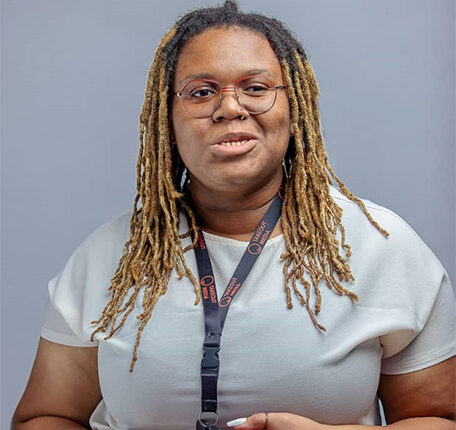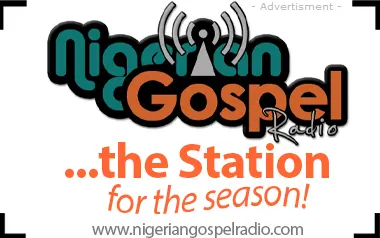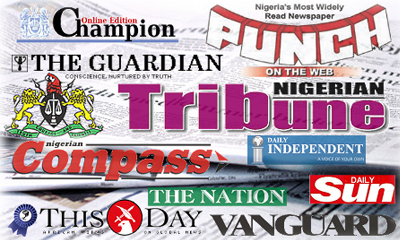Amarachi Nwauwa is a creative leader and design strategist who is passionate about using design as a tool to address complex global challenges. In this interview, our Correspondent CHIDI UGWU discusses the company’s entry into Nollywood, how to adapt branding strategies for various streaming platforms, and other current issues. Excerpts…
Design Teem has been a major player in the branding and design industry for more than a decade. Could you please share some of the key milestones or accomplishments that have shaped the company’s journey?
Design Teem is a multidisciplinary design studio in Abuja, Nigeria. We began as Takeout Media, a media and communications agency that assisted local and global businesses in shaping how they communicate with their target audiences. As our business grew, we diversified under a parent company, TM Global, and formed SPVs to solve problems in more niche industries. DT is one of those vehicles, and we have collaborated with companies such as Cosgrove, TAJBank, UNDP, the Standards Organisation of Nigeria, PEBEC, TotalEnergies, WaterAid, the Nasarawa Investment and Development Agency, Sozo Films, Natives Filmworks, and others. Some recent highlights in our journey that have shaped us as a company include three of our movie projects with Natives Filmwork reaching number one on Amazon Prime—Love & Life, Kill Boro, and A Father’s Love; leading the rebranding of the World Bank’s WASH project in Nigeria, known as SURWASH; and Tokunbo, a new Nollywood film, reaching number one on Netflix.
What inspired Design Teem to venture into the Nollywood?
We got involved in Nollywood because we saw a gap. Looking at the industry’s current trajectory, there has been a lot of growth in the last decade, with an influx of capital and interest in the industry, as well as an improvement in the quality of work and stories that we tell. We wanted to be a part of this evolving narrative and further influence people’s perceptions of Nigerian films.
Given your recent foray into Nollywood movie branding, how does this new venture align with Design Teem’s core competencies and long-term goals?
I mean, we are a “teem” of designers. This new venture has presented us with new challenges in the film industry, and one thing is certain: we enjoy challenges. In the long run, we want to help brands and businesses visually tell their stories, connect with their audiences, and influence people’s opinions. Working with filmmakers is another way we accomplish this, as we solve their business problems, shape the perception of their projects, and ensure that their audience receives the correct message about their work on the first contact.
How has your nine years at Takeout Media influenced your approach to movie branding?
Working at Takeout Media has helped us understand the power of storytelling, how consumers think, and how to best connect with them. These strategies have translated well to our movie branding services, because at its core, we help filmmakers sell their films to their audiences by highlighting the value proposition each story provides and instilling consumer affinity for them.
What are the unique challenges and opportunities you face when branding Nollywood films in comparison to other industries?
This is a fascinating question. Nollywood presents a unique branding challenge: each film has a distinct emotional core that we must capture and communicate. Our primary goal with each project is to strike a delicate balance between revealing just enough to pique the audience’s interest while maintaining an air of mystery. And this is where it diverges from other industries. Unlike other industries, entertainment branding necessitates the creation of marketing materials that accurately reflect the filmmaker’s vision while avoiding spoilers. This industry presents us with both a challenge and an opportunity, necessitating a nuanced approach in which every visual element, photograph, and copy we write is carefully curated to elicit the appropriate emotions, whether they are excitement, fear, thrill, suspense, or camaraderie. Our expertise lies in knowing exactly what to show and what to withhold. Because we do more than just pre-release activities, we can build anticipation in the audience and shape their pre-release and viewing experiences.
How do you ensure that your branding is consistent with the filmmaker’s vision and the expectations of the Nollywood audience?
So, we have a procedure that we follow. Once we are on board, we request the script, loglines, or a movie preview, depending on the stage of the project. Once we are familiar with the story, we look for references that are relevant to it and create a mood board for photography. Then we create scamps, which are essentially sketches of how the final poster will look. Once the directions are approved, we schedule a photoshoot with the talent or identify key scenes from the film that we want to capture on set, and then we begin execution. That is where we create the title treatment, poster designs, title sequence, animated posters, and any other collateral that the project requires for maximum visibility.
Design Teem provides a wide variety of services. How do these different abilities come into play when branding a film?
We like to think of it as branding for films. Assume the movie is about a person or a business. They have people they usually talk to or who want to hear what they have to say. Our job is to ensure that they have all of the tools they need to be heard by those people, as well as others who need to know what they have to say but may not know where to look first. So, when we are branding a movie, we combine motion design, typography design, CGI, and graphic design. They all play a role in reinforcing and amplifying the story for the intended audience.
With projects on Amazon Prime and Netflix, how do you tailor your branding strategies to different streaming platforms?
We prefer to understand who we are dealing with. So that is always one of the first questions we ask filmmakers when we meet with them. What location will the film take place?
That will have an impact on the content we create. Will it air on Netflix, Prime, or YouTube, or will it be released in theatres? We must approach each platform differently, so we simply ensure that we are aligned with filmmakers and distributors and understand the norms of each platform.
Can you walk us through the creative process for one of your movie branding projects, like the new Netflix film “Tokunbo”?
For Tokunbo, it was a daring project! Mr. Chris and his team had a big vision, and our guys had to match that energy. We use the same procedure for every project, but the specifics of each film dictate how we adapt that procedure. We had to travel to Lagos and stay on set while the film was being shot to ensure we had plenty of images to work with. We began by reading the script before the casting call was issued. Then we created scamps for the posters we wanted to create, as well as a schedule for the photoshoot on set, to ensure that our plans matched the shooting schedule. Once we had our photos and scamps approved, we started designing—the teasers, posters, banners, motion graphics, and marketing collaterals were completed alongside the title treatment. That is the fancy text that contains the title of the film. We went through a lot of iterations, and there were many designs that the public would never see. We must have tried at least 30 different concepts, but this is not typical for these types of projects. Once we had approved the concepts, we scaled them to the appropriate sizes for the various platforms. So, yeah. That is our procedure.
As a branding and design expert, what do you see as the most significant challenges confronting Nigeria’s creative industry today?
That is a difficult question because it is never just one thing. However, one challenge I can identify is a lack of alignment between creatives and clients. Sometimes our process is not clear, including what it takes to do good work and how long it can take. If this is not communicated clearly, it can have an impact on the project’s vibe on both sides. In the end, good communication is what keeps projects going.We are particularly interested in improving the visual storytelling aspect of the industry. There is a tremendous opportunity to develop more sophisticated, globally competitive marketing materials that truly capture the essence of our films.To address this, we are implementing a more streamlined structure and process that will allow us to consistently replicate excellent work. Nigeria has a wealth of talent, but we believe that good systems can multiply impact. It is about creating an environment in which creativity can thrive within a clearly defined framework.
What has been the most fulfilling aspect of working on Nollywood movie branding projects?
Advertisement
Honestly, it is a combination of factors, but seeing our work help filmmakers realise their vision has been rewarding. Our teammates get to see their work have a real impact on a global scale, which is always exciting. I mean, seeing it on the screen is one thing. Seeing it on social media, billboards, awards shows, and so on. That is extremely rewarding.
Can you give an example of a movie branding project that made a significant contribution to the film’s success?
All of them! Our work on A Father’s Love and Tokunbo contributed significantly to the project’s success. Beyond design, we handled the marketing for both projects and were able to connect them to social phenomena that got people talking about them. Not just talking, but actual views that have impacted the balance sheet, if you get what we mean.
How do you assess the efficacy of a movie’s branding campaign? Which metrics do you track?
Performance of the project on any distribution platform. We like to say that our clients’ success is our success, and we truly believe that. That is what motivates us to bring our A-game each time.
What trends or developments do you see for the future of Nollywood movie branding?
The scope is going to expand. Not only do I design posters, but I also design sets, collateral, shop signs, etc. The elements of that story’s built world will require coherence, which will have an impact on the project’s market performance.
Consider the Lady Whistledown pamphlets that were distributed in Bridgerton, for example. Those were branded and designed. And, as the industry grows and funding becomes more available, we believe a market gap will open up for this position. And Design Teem is ready for that.
How do you see Design Teem contributing to the development and evolution of the Nollywood industry?
For example, consider our systems, processes, and approach. Also, we genuinely care about our clients, so we take the time to learn and understand what the best outcome is for them, and that is the KPI we use to assess our performance. I hate to say this because it has such a negative reputation in the market, but we are like a family. We are very professional, but we prioritise the best interests of our clients because their satisfaction and success are what motivates us.
Can you discuss the team’s culture and the values that guide your work?
We genuinely believe in providing exceptional services and products that lead to client satisfaction and rewarding careers for our employees. So we filter each project based on this.
Is there a significant challenge that we can solve, will our employees be excited to work on it, and will our clients be satisfied at the end of the project?
How do you encourage creativity and innovation in your team?
We play to everyone’s strengths. Because we are a team, we know what each person is good at and try to play to their strengths. Our team is constantly evolving and expanding our skill sets, so there is always an opportunity to try something new on each project that pushes the boundaries of what we have previously accomplished. We ensure that everyone has a voice and feels comfortable using it. Everyone is heard, so we can all contribute without being judged because we know we have the same goal at the end of the day.
How do you develop trust and strong relationships with your clients, particularly in the fast-paced world of film production?
We ensure that we are adding value to the table. Then, if we say we will do something, we actually do it. We make certain that we are a dependable partner for our clients and partners, someone they can rely on to provide real solutions to their business challenges, and someone who can grow alongside them and accommodate their expansion.
How do you approach working with filmmakers, actors, and other stakeholders on a film project?
Clear, open communication and collaboration. People want to participate in whatever you are doing. So, when working with these stakeholders, we make sure to be transparent and accountable. They understand where we are in time and what to expect. That way, we can anticipate any potential frictions. And if they do arrive, we can handle it.
Is Design Teem planning to expand its operations outside of Nigeria, given the growing international popularity of Nollywood films?
Definitely. We have operations in the United Kingdom, the United States, and other African countries, so we welcome new business opportunities. We like to say we are locally owned but serve globally. The world is a global village, and we are positioned to serve it.
What are the challenges and opportunities you see when entering new markets?
I would say understanding different cultures, because everything is contextual. What works in Nigeria might not fly in Boston.











